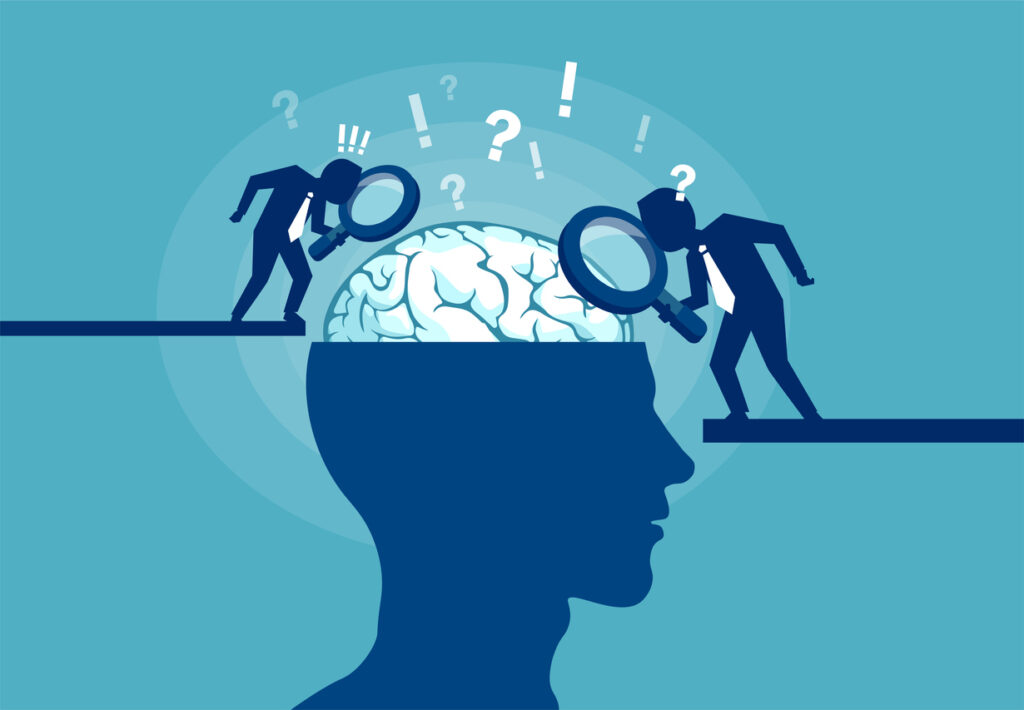Neuroscience is increasingly being used in discussions about L&D to inform debates about how people learn.
Personally, I’ve always been fascinated by the topic and my opinion is that as trainers, designers, facilitators, and coaches we are working with people’s brains every day, whether we’re aware of it or not. It’s our professional responsibility to learn more about how it works.
There are some who argue that we can be perfectly marvellous trainers, designers or educators instinctively or through years of experience.
You can’t argue with that – clearly some people have natural and honed abilities that they have learned along the way. Those people and their skills are to be valued and emulated.
There are others who argue that neuroscience has nothing to share with us yet in L&D, that the science is too new and there isn’t enough evidence you can transfer to work based training.
It’s very difficult to say a single piece of pure neuroscience research demonstrates that we should adopt a new technique or change what we’re doing – that’s true of all the sciences though.
Some use ‘neuroscience’ as a sprinkle of glitter on an otherwise ordinary solution and therefore tarnish the value that exists.
Others buy EEG machines to give themselves the appearance of using ‘science’, and there are even some who use neuroscience like snake oil, proudly exclaiming, ‘behold! This will cure all learning ills’!
Some people suggest talking about ‘brain based learning’ is ridiculous because all learning is brain based, which is true but not all approaches to learning are.
Sometimes the field of study is punished for the label that has been put on it.
It depends to some degree on how you define neuroscience. If you see it as purely the structure and biology of the brain, then that does limit what we currently can apply to real life learning situations.
Obstacles to overcome
There are many challenges with applying neuroscience directly to an L&D situation.
Experiments rarely happen in real life learning situations. Experimental groups are often small, and the subjects have often been people with brain damage or a disability or in some cases it’s only been tested on rats or slugs, and hypotheses are often extremely narrowly defined.
Learning is not one thing, there can’t be a general theory or a simple solution that’s going to solve the age-old challenges we face in L&D.
Real life training isn’t like that, which is why it’s very difficult to say a single piece of pure neuroscience research demonstrates that we should adopt a new technique or change what we’re doing – that’s true of all the sciences though.
One piece of research is rarely significant enough to transform anything and we tend to aggregate multiple pieces of scientific evidence to apply to the world of work.
It’s not ‘one size fits all’
If you define neuroscience as the study of your amazing brain and nervous system, however, you get a broader view of neuroscience that incorporates developmental, cognitive and experimental psychology, chemistry, biology, physics, maths and computational science amongst other areas.
Arguing about exactly where a piece of data came from may not be as valuable as evaluating research and testing it out in your practice.
What’s important is that we examine learning in more detail. There are apparently more than 7.7 billion people on the planet (check out the live counter on Worldmeters).
Each person has approximately 86 billion neurons, each one with multiple connections. That makes an awful lot of different brains and a lot of variety in learning across the planet.
Learning is not one thing, there can’t be a general theory or a simple solution that’s going to solve the age-old challenges we face in L&D, i.e. how to get people to apply what they learn, how to change people’s behaviour, habits and beliefs, how to make them safe, and how to help them lead better.
Being able to analyse, unpick and identify what you do well, and why, is an excellent way to improve our professionalism, along with using your emotions and gut instincts to feel what’s working.
Neuroscience has a role because it gives us tools to dig deeper into what we do and evidence to counteract what may have become accepted practice.
You don’t need to be a neuroscientist yourself because there are people out there who can simplify the details and extract what’s relevant, but an interest in the main tool for learning – our brains – should be a goal for all of us in L&D.
Interested in this topic? Read Using neuroscience to gain support for learning at work.
Neuroscience is increasingly being used in discussions about L&D to inform debates about how people learn.
Personally, I’ve always been fascinated by the topic and my opinion is that as trainers, designers, facilitators, and coaches we are working with people’s brains every day, whether we’re aware of it or not. It’s our professional responsibility to learn more about how it works.
There are some who argue that we can be perfectly marvellous trainers, designers or educators instinctively or through years of experience.
You can’t argue with that – clearly some people have natural and honed abilities that they have learned along the way. Those people and their skills are to be valued and emulated.
There are others who argue that neuroscience has nothing to share with us yet in L&D, that the science is too new and there isn’t enough evidence you can transfer to work based training.
It’s very difficult to say a single piece of pure neuroscience research demonstrates that we should adopt a new technique or change what we’re doing – that’s true of all the sciences though.
Some use ‘neuroscience’ as a sprinkle of glitter on an otherwise ordinary solution and therefore tarnish the value that exists.
Others buy EEG machines to give themselves the appearance of using ‘science’, and there are even some who use neuroscience like snake oil, proudly exclaiming, ‘behold! This will cure all learning ills’!
Some people suggest talking about ‘brain based learning’ is ridiculous because all learning is brain based, which is true but not all approaches to learning are.
Sometimes the field of study is punished for the label that has been put on it.
It depends to some degree on how you define neuroscience. If you see it as purely the structure and biology of the brain, then that does limit what we currently can apply to real life learning situations.
Obstacles to overcome
There are many challenges with applying neuroscience directly to an L&D situation.
Experiments rarely happen in real life learning situations. Experimental groups are often small, and the subjects have often been people with brain damage or a disability or in some cases it’s only been tested on rats or slugs, and hypotheses are often extremely narrowly defined.
Learning is not one thing, there can’t be a general theory or a simple solution that’s going to solve the age-old challenges we face in L&D.
Real life training isn’t like that, which is why it’s very difficult to say a single piece of pure neuroscience research demonstrates that we should adopt a new technique or change what we’re doing – that’s true of all the sciences though.
One piece of research is rarely significant enough to transform anything and we tend to aggregate multiple pieces of scientific evidence to apply to the world of work.
It’s not ‘one size fits all’
If you define neuroscience as the study of your amazing brain and nervous system, however, you get a broader view of neuroscience that incorporates developmental, cognitive and experimental psychology, chemistry, biology, physics, maths and computational science amongst other areas.
Arguing about exactly where a piece of data came from may not be as valuable as evaluating research and testing it out in your practice.
What’s important is that we examine learning in more detail. There are apparently more than 7.7 billion people on the planet (check out the live counter on Worldmeters).
Each person has approximately 86 billion neurons, each one with multiple connections. That makes an awful lot of different brains and a lot of variety in learning across the planet.
Learning is not one thing, there can’t be a general theory or a simple solution that’s going to solve the age-old challenges we face in L&D, i.e. how to get people to apply what they learn, how to change people’s behaviour, habits and beliefs, how to make them safe, and how to help them lead better.
Being able to analyse, unpick and identify what you do well, and why, is an excellent way to improve our professionalism, along with using your emotions and gut instincts to feel what’s working.
Neuroscience has a role because it gives us tools to dig deeper into what we do and evidence to counteract what may have become accepted practice.
You don’t need to be a neuroscientist yourself because there are people out there who can simplify the details and extract what’s relevant, but an interest in the main tool for learning – our brains – should be a goal for all of us in L&D.
Interested in this topic? Read Using neuroscience to gain support for learning at work.






One Response
Dr. Collins, you’ve done an
Dr. Collins, you’ve done an excellent job of explaining both the opportunity and the challenges presented by the collection of related disciplines known as “neuroscience.”
I believe that all L&D practitioners have a responsibility to pay attention to the latest advances in learning science and look for ways to apply that information effectively. It saddens me to see a small but vocal segment of our profession that seems to mistrust an entire field, relying on some questionable logic to support their position. For example:
1. Pulling quotes out of books or papers published more than a year or two ago. The field is advancing so rapidly that “expert opinion” from a book that was published several years ago is seriously suspect. (They also tend to ignore more recent publications that demonstrate how the L&D profession is effectively applying neuroscience.)
2. Dismissing a study because of how it is presented in a blog post or public news media. It’s important to go back to the peer-reviewed source in order to evaluate the quality of the scientific approach, especially if you are going to dispute it.
3. Misunderstanding educational/cognitive neuroscience as somehow in conflict or competing with cognitive psychology. Neuroscience often validates assumptions drawn from theories in psychology. This doesn’t weaken the claims of neuroscience – it shows how scientists work together to get closer to the truth. Whenever these two sciences draw the same conclusion through different lenses, this is a wonderful thing – not “proof” that neuroscience has nothing to offer.
4. Drawing negative generalizations about any practitioner who leverages neuroscience to enhance the learning experience. There are certainly some folks out there who are guilty of over-simplifying where neuroscience is concerned, just as there are people who over-generalize “the power of storytelling,” “learning styles” and other topics that have become popular buzz words in L&D.
There are also professionals like you, who take the time to review the source and bring only valid and useful information to light.
Thank you!